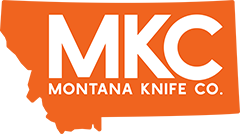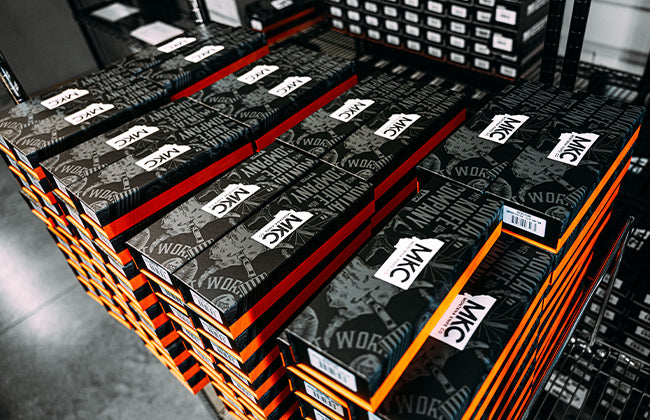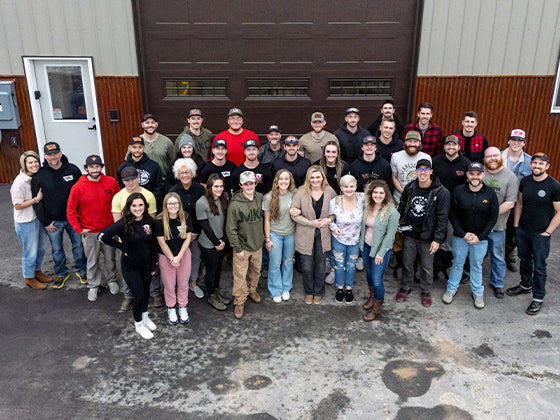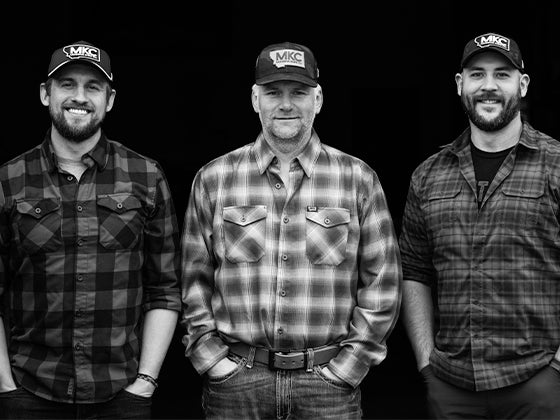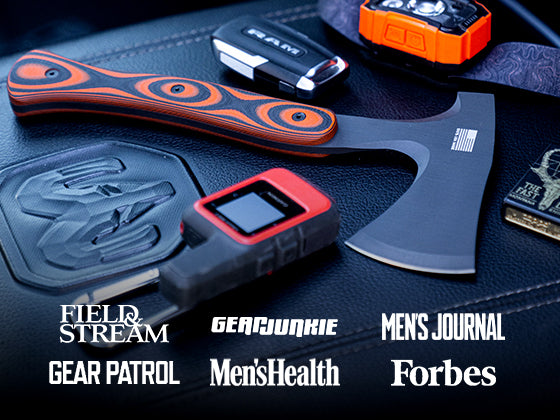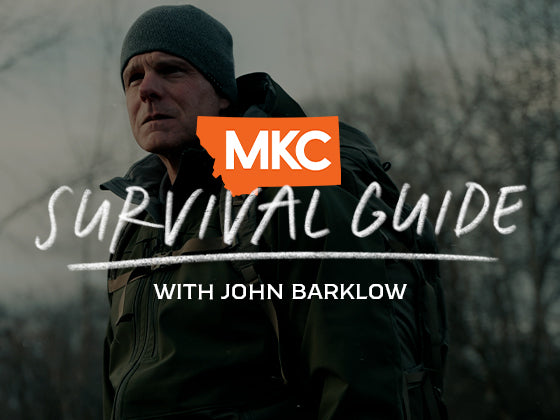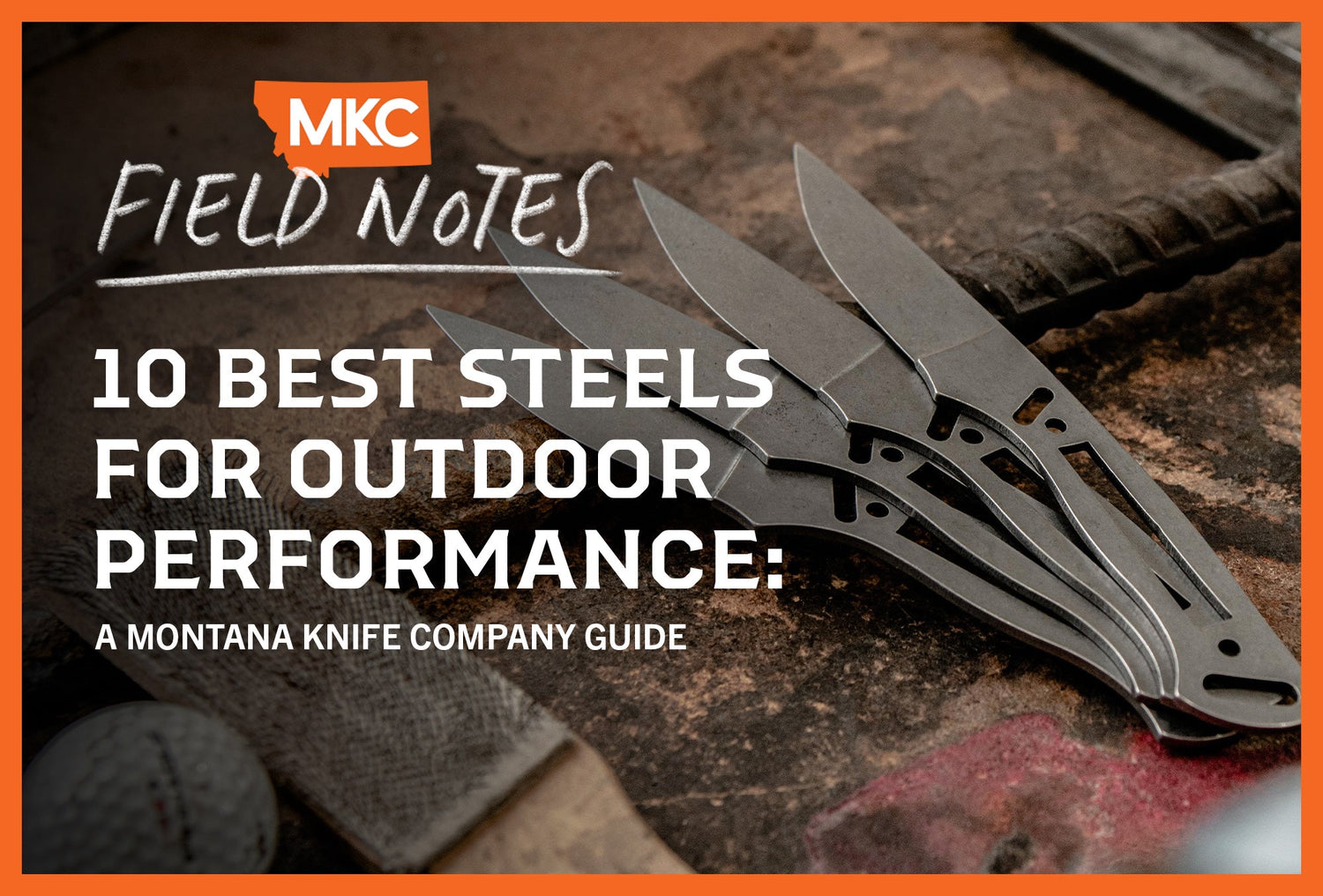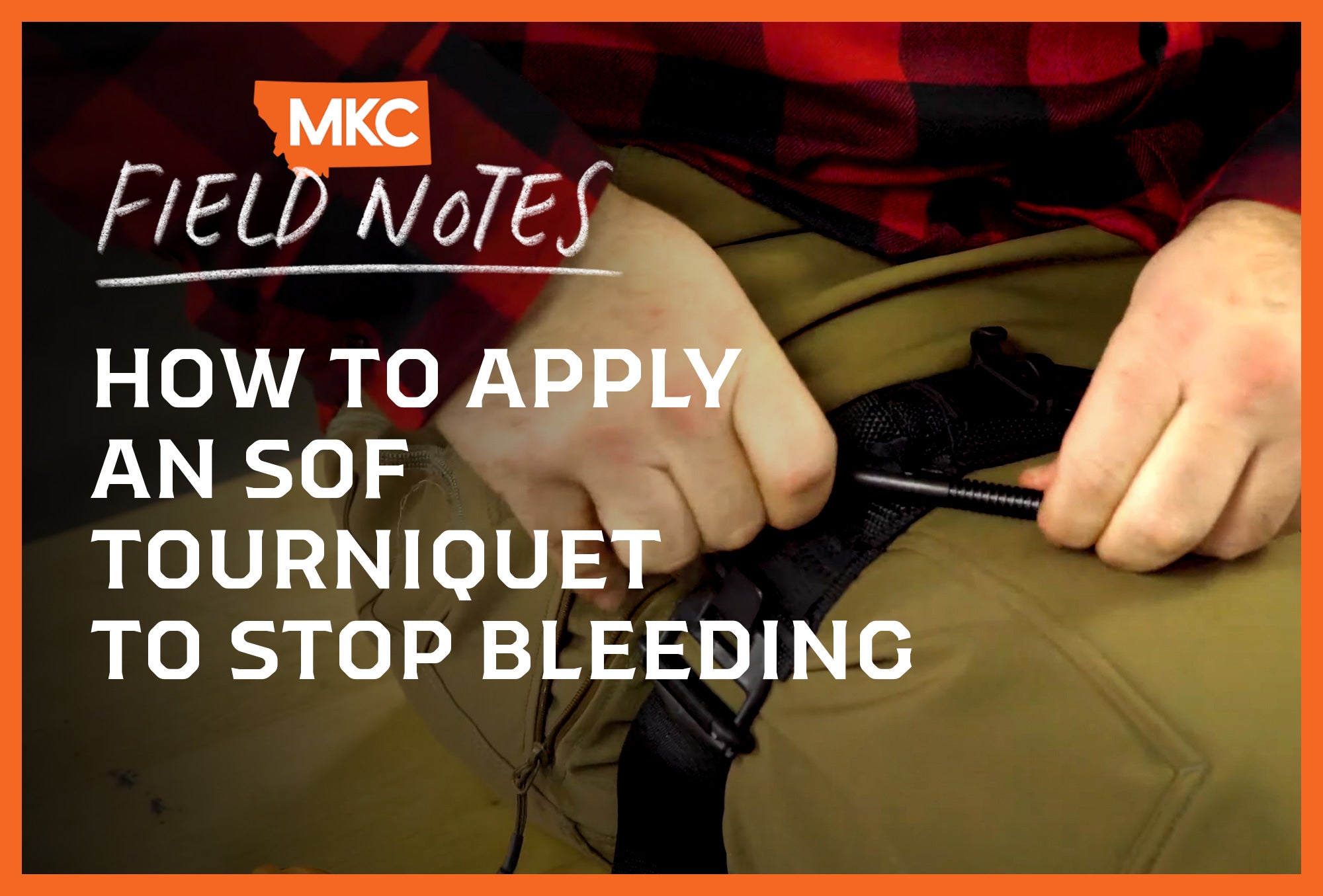Whether you’re hunting elk in Montana’s backcountry, batoning wood for a bushcraft shelter, or prepping a meal at a remote campsite, your knife’s steel can make or break your outdoor experience.
At Montana Knife Company (MKC), we craft blades for those who demand the best, and that starts with choosing the right steel. This guide contains the top 10 best knife steels for 2025, tailored for outdoor pursuits like hunting, bushcraft, backpacking, and camping. We’ve handpicked premium options that align with MKC’s commitment to quality, focusing on toughness, edge retention, corrosion resistance, and ease of sharpening — key traits for rugged use.
From our flagship CPM MagnaCut to classics like 52100, here’s what you need to know to pick the best knife steel for your next adventure.
Why Steel Matters
A knife’s steel determines how it handles real-world tasks: skinning game, chopping kindling, prying logs apart, etc. Toughness keeps it from chipping under stress, edge retention ensures it stays sharp through heavy use, corrosion resistance fights rust in wet conditions, and ease of sharpening lets you maintain it in the field.
Each steel here is a premium choice, vetted for outdoor performance, with insights drawn from industry trends, our own research, and MKC’s own knife-making expertise.
The Lineup
Here’s our list of the 10 best knife steels in no particular order. This list features a mix of modern steels and time-tested classics, suited for every outdoor task from hunting to bushcraft.

Detailed Steel Breakdowns
1. CPM MagnaCut
- Standout Characteristic: The ultimate all-rounder — toughness, edge retention, and corrosion resistance in one package, designed by Larrin Thomas specifically for knives.
- Toughness vs. Edge Retention: High toughness (near CPM 3V levels) paired with edge retention rated seven out of 10 by Knife Steel Nerds, outpacing S35VN.
- Benefits: Stays sharp through days of use, shrugs off rust in soggy weather, and won’t chip when you’re working hard. It’s why MKC uses it in blades like the Blackfoot 2.0.
- Drawbacks: Newer steel, so long-term field data is still being collected; premium price matches its premium performance.
- Corrosion Resistance: Near-supersteel territory — ideal for wet campsites or coastal hunts.
- Ease of Sharpening: Moderate; its fine carbides make it easier than most high-end steels — touch it up with a stone in the field.
- Use Application: Excels at skinning game with precision, chopping light kindling for campfires, and general backpacking tasks — versatile enough for any outdoor job.
2. 52100
- Standout Characteristic: A tough, cryogenically treated high-carbon steel with roots in ball bearings, loved for its durability and edge-taking ability.
- Toughness vs. Edge Retention: Handles abuse well, but its moderate edge retention requires more frequent sharpening than stainless options.
- Benefits: Built for heavy tasks, it takes a razor edge fast and holds up under pressure.
- Drawbacks: Rust-prone. Montana’s damp seasons demand oiling after use.
- Corrosion Resistance: Low; as a carbon steel, it’s all about maintenance.
- Ease of Sharpening: Sharpens quickly on basic stones, perfect for camp.
- Use Application: Ideal for tasks that demand tough tools: batoning firewood in bushcraft, chopping through game in hunting, heavy-duty camp chores, etc.
3. CPM S30V
- Standout Characteristic: The trailblazer of premium steels since 2001, known for edge retention and corrosion resistance.
- Toughness vs. Edge Retention: Moderate toughness with high edge retention (rated six out of 10 by Knife Steel Nerds). Cuts longer than CPM 154.
- Benefits: Proven performance outdoors, resists rust, and stays sharp through tough jobs. A dependable workhorse.
- Drawbacks: Slightly more brittle than MagnaCut; sharpening takes more effort than carbon steels.
- Corrosion Resistance: High — built for damp trails and bloody hands.
- Ease of Sharpening: Moderate; requires patience but is manageable with decent tools.
- Use Application: Solid for skinning game, light bushcraft tasks like feather-sticking, and camp cooking. Reliable across the board.
4. CPM S35VN
- Standout Characteristic: A refined evolution of S30V — tougher and more easily sharpened for outdoor reliability.
- Toughness vs. Edge Retention: High toughness (better than S30V) with strong edge retention. Cuts long and resists breaking.
- Benefits: Versatile for mixed outdoor tasks, resists rust in wet conditions, and holds an edge through a multi-day trip.
- Drawbacks: Not as tough as 3V or as wear-resistant as 20CV. Sits in the sweet spot with some limits.
- Corrosion Resistance: Very good. Handles rain-soaked campsites or bloody game processing.
- Ease of Sharpening: Moderate; a strop or stone keeps it sharp without much fuss.
- Use Application: Great for skinning and caping game, light chopping for camp prep, and backpacking utility. Ideal for all-around use.
5. CPM 3V
- Standout Characteristic: A beast of toughness, designed for hard-use tools and knives that take a beating.
- Toughness vs. Edge Retention: Tops the list in terms of toughness. Edge retention is good, not elite; requires touch-ups after heavy work (Blade Magazine).
- Benefits: Won’t snap when batoning or prying; a tank for outdoor abuse.
- Drawbacks: Not stainless. Low rust resistance demands dry storage or oiling; sharpening’s a chore.
- Corrosion Resistance: Poor; keep it dry or coated in wet conditions.
- Ease of Sharpening: Difficult. Diamond stones are a must, less field-friendly.
- Use Application: Perfect for batoning logs in bushcraft, chopping through game or roots, and heavy camp tasks. Built for durability over finesse.
6. AEB-L
- Standout Characteristic: A stainless steel with high toughness and a razor-sharp edge. Originally made for razor blades, now a knife favorite.
- Toughness vs. Edge Retention: High toughness (outshines S30V) with moderate edge retention. Sharpens easily but dulls faster than supersteels.
- Benefits: Takes a wicked edge for precision, resists rust well, and holds up under stress. A sleeper hit for outdoors.
- Drawbacks: Edge retention lags behind 20CV or S35VN; not the longest-lasting for heavy cutting.
- Corrosion Resistance: Very good. Handles wet environments like a champ.
- Ease of Sharpening: Easy; hones quickly to a scalpel edge, great for field touch-ups.
- Use Application: Tops for skinning and caping with surgical precision, light camp cutting, and backpacking. Sharpness is its game.
7. CPM 20CV
- Standout Characteristic: A premium stainless steel with top-tier wear resistance and corrosion protection.
- Toughness vs. Edge Retention: Moderate toughness with high edge retention. Cuts forever, though not as tough as 3V.
- Benefits: Stays sharp through long trips, laughs off rust, and needs little upkeep. Ideal for wet adventures.
- Drawbacks: Pricey; sharpening is tough, best done at home with advanced tools.
- Corrosion Resistance: Outstanding. Handles rain, blood, or sweat without blinking.
- Ease of Sharpening: Difficult; diamond stones required, not field-friendly.
- Use Application: Best for skinning over multiple days, light bushcraft cutting, and backpacking where edge longevity matters most.
8. Elmax
- Standout Characteristic: A balanced stainless steel from Uddeholm, seamlessly blending toughness and edge retention.
- Toughness vs. Edge Retention: Moderate toughness with high edge retention; close to 20CV but easier to work with.
- Benefits: Cuts clean, resists rust, and takes abuse. A versatile outdoor companion.
- Drawbacks: Not as tough as 3V; premium cost for subtle gains over cheaper steels.
- Corrosion Resistance: Very good. Stands up to wet campsites or bloody game.
- Ease of Sharpening: Moderate; easier than 20CV, harder than AEB-L.
- Use Application: Great for caping game, feather-sticking in bushcraft, and camp prep. Sharp and durable for mixed tasks.
9. CPM 154
- Standout Characteristic: A powder metallurgy upgrade to 154CM, offering consistent performance and reliability.
- Toughness vs. Edge Retention: Good toughness with solid edge retention — dependable, not dazzling.
- Benefits: Affordable for a premium steel, resists rust, and sharpens easily. A practical outdoor pick.
- Drawbacks: Edge needs more frequent touch-ups than 20CV or S35VN.
- Corrosion Resistance: Better than carbon steels, fine for most conditions.
- Ease of Sharpening: Easy; field-friendly with basic stones, a big plus outdoors.
- Use Application: Reliable for skinning, light chopping in camp, and backpacking utility. A jack-of-all-trades steel.
10. 440C
- Standout Characteristic: A classic stainless steel; a benchmark for decades with solid all-around performance.
- Toughness vs. Edge Retention: Moderate toughness and edge retention. Holds up well but not as long as modern supersteels.
- Benefits: Resists rust, takes a decent edge, and sharpens fast. A proven outdoor staple at a lower cost.
- Drawbacks: Outclassed by newer steels in edge retention and toughness; not cutting-edge.
- Corrosion Resistance: High. Handles wet environments better than carbon steels.
- Ease of Sharpening: Easy; quick to hone in the field, a practical choice.
- Use Application: Good for skinning game, light camp tasks, and backpacking. Best for casual use where simplicity wins.
Choosing the Best Knife Steel for Your Needs
Chasing the latest supersteel will get you nowhere. To select the best knife steel for your next outdoor adventure, match the steel properties with your wilderness pursuit, whether you’re carrying it for self-defense during a hike or to process the elk of a lifetime.
We at Montana Knife Company have built our reputation by making this decision simple for knife owners like you. To select the best knife steel for your needs, answer these questions:
- What’s your primary activity? For skinning game and precise cutting, prioritize edge retention and ease of sharpening (MagnaCut, AEB-L). For chopping, batoning, and prying, focus on toughness (CPM 3V, 52100). For general backcountry use, look for balanced performance (S35VN, Elmax).
- What’s your maintenance comfort level? If you’re diligent about blade care, high-carbon options like 52100 or CPM 3V offer unmatched toughness. If you prefer minimal maintenance, choose highly corrosion-resistant steels like MagnaCut or CPM 20CV.
- How will you sharpen in the field? If you’re comfortable with field maintenance, consider steels that respond well to basic stones (AEB-L, CPM 154, 52100). If you’d rather sharpen less frequently, albeit with more effort, choose high edge retention steels (CPM 20CV, S35VN).
Next, take action on your steel choice:
- Test before you invest. If you find yourself in Frenchtown, MT, visit our showroom. You can handle different MKC blades and feel the difference between steels.
- Consider specialized options for specific environments — MagnaCut or S35VN for wet conditions, 52100 or CPM 3V for heavy-duty work.
- Start with one premium steel that matches your primary activity, then build your collection as you discover your preferences.
Specs and lab testing results may look impressive, but committed outdoorsmen know all that matters is how your blade performs when it counts — whether you’re field dressing whitetail at dusk, splitting kindling in a rainstorm, or cutting rope for an emergency shelter miles from the trailhead.
Each MKC knife is purpose-built with the best knife steel for specific outdoor tasks, heat-treated to optimize performance, and field-tested in Montana’s backcountry.
Browse our collection to find your perfect blade, or reach out to our team for personalized recommendations based on your specific outdoor needs.

by Josh Smith, Master Bladesmith and Founder of Montana Knife Company
